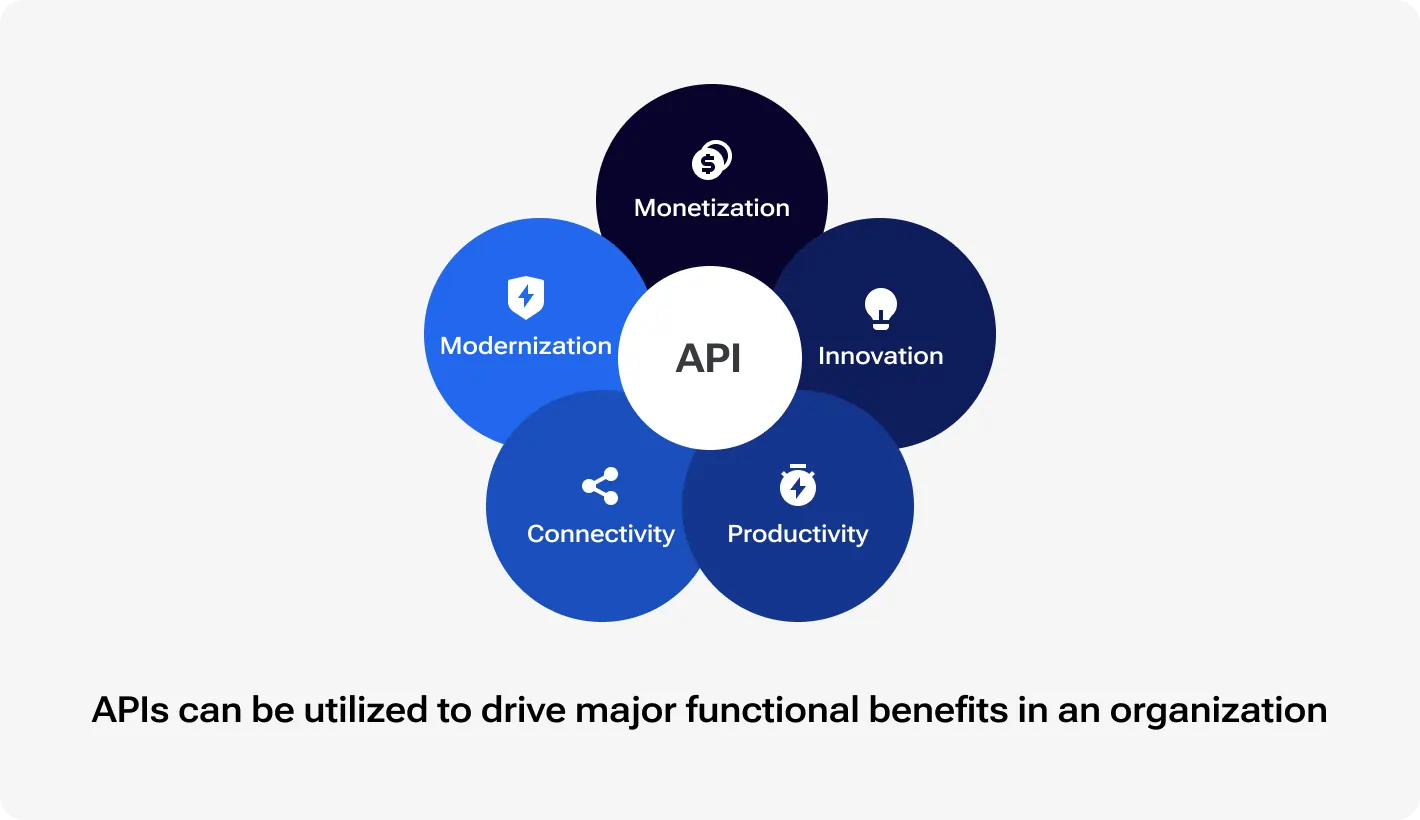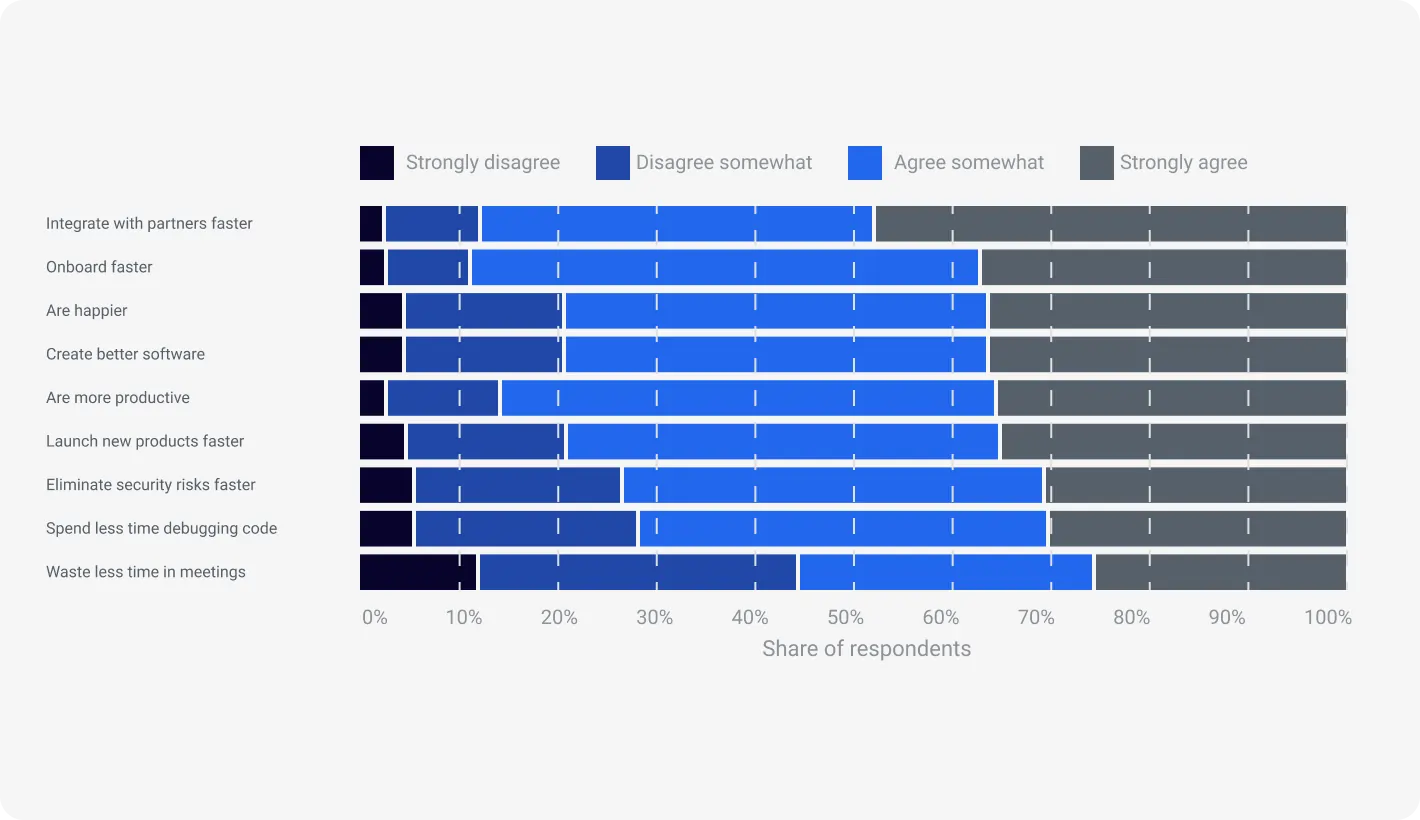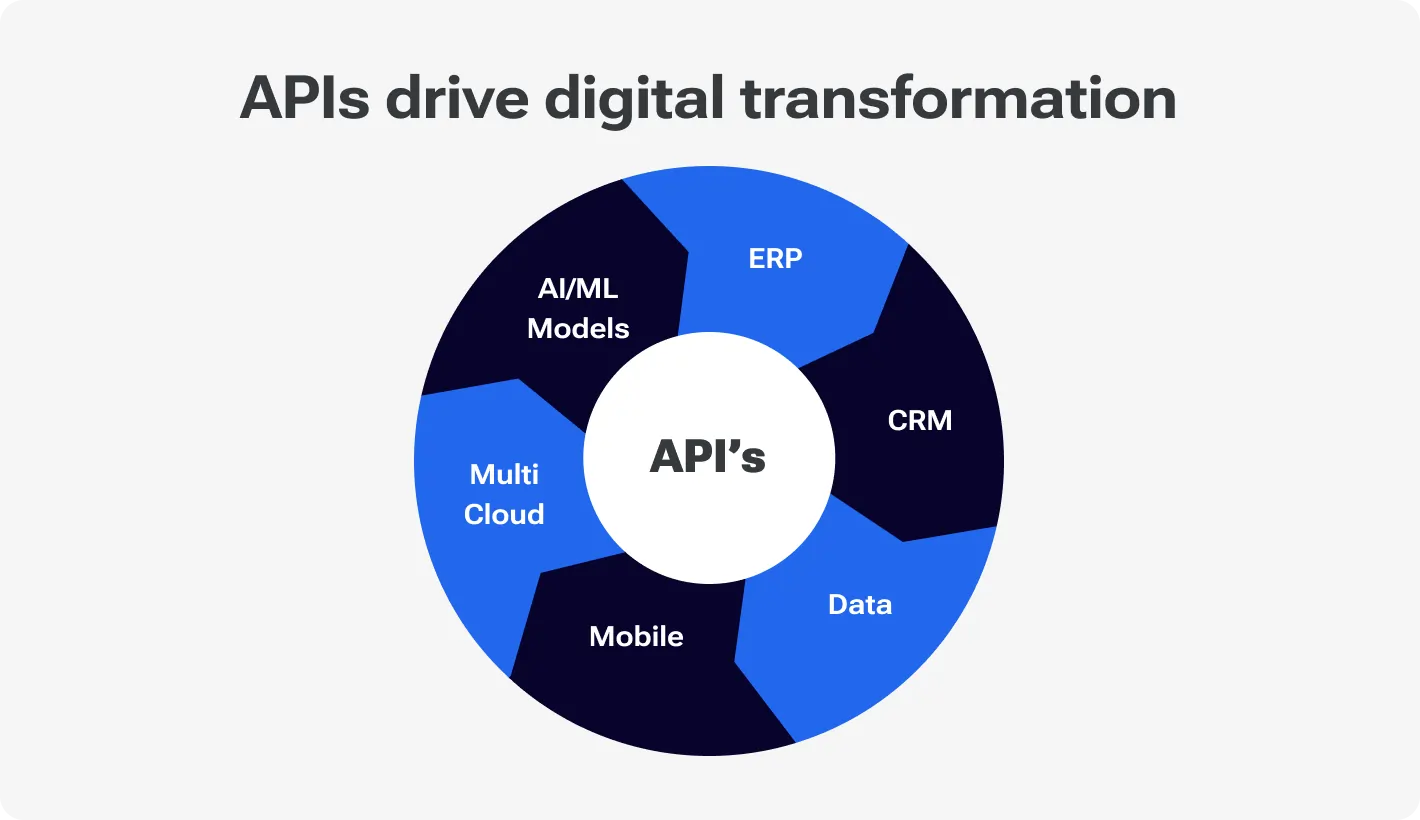Outsourcing to Czechia

How much does it cost to hire developers in Czechia?
Dec 2nd 25 - by Devico Team
Find out how much it costs to hire software developers in Czechia in 2025. Compare hourly rates, roles, and factors that impact pricing.
Hire
Hire by role
Hire Front-end developers
Hire Back-end developers
Hire Full-stack developers
Hire Android developers
Hire iOS developers
Hire Mobile developers
Hire AI engineers
Hire ML engineers
Hire Automation QA engineers
Hire Blockchain developers
Hire Data engineers
Hire Cloud engineers
Hire by skill
Hire JavaScript developers
Hire TypeScript developers
Hire Ruby on Rails developers
Hire React Native developers
Hire Flutter developers
Hire Golang developers
Hire React.js developers
Hire Python developers
Hire PHP developers
Hire .NET developers
Hire Java developers
Hire Laravel developers

API development
December 17, 2024 - by Devico Team
Summarize with:
Find out how APIs enable flawless integration, inspire creativity, and improve operational efficiency thereby driving digital transformation.
Customer digital expectations are changing rapidly, requiring quick integration of new digital capabilities and applications. The growing demand is reflected in the proliferation of APIs. Application programming interfaces drive 70% of Expedia.com's and 90% of eBay's income. It emphasizes its important role in the modern digital economy.
Better internal communication and process automation made possible by application programming interfaces (APIs) enable faster decision-making and more tailored service to every customer. Moreover, as they provide a consistent approach to accessing and interacting with data, APIs are essential in establishing new channels of cooperation with either internal or outside partners.
As a key component of digital transformation, APIs let companies keep current with the always-changing digital scene and innovate. They let companies respond more easily to changes in consumer tastes and the state of the market.
In this article, we explore the relevance of application programming interfaces (APIs) in the context of digital transformation.

Digital transformation projects in many sectors rely heavily on APIs. They make it possible for businesses to link and integrate various apps, data sources, and systems, which allows for the smooth transfer of data and operations. By connecting previously incompatible technology, APIs open up new possibilities for organizations to take advantage of digital ecosystems.
A whopping 83% of IT pros see API integration as mission-critical for their company, according to the State of API Integration Report. In addition to their growing importance as a product category, APIs are also becoming more lucrative as a medium for establishing partnerships and easing the process of innovation.
Digital transformation in different industries is driven by different factors. Among them are:
Modern technological developments
Companies are uncovering new opportunities because of developments in cloud computing, big data, artificial intelligence, and machine learning.
Client expectations
Companies under pressure to respond quickly to meet customer expectations for customized experiences on all digital platforms.
Market competition
Companies have to continually embrace digital technology and remain ahead of their rivals by always developing technologically.
Changes in regulation
As regulatory systems in various sectors evolve and permit digital transformation, compliance via technology adoption is growing in relevance.
API development guide: Integration, examples, and tools
As intermediaries, APIs streamline the data exchange and communication across many software systems. Its rule sets and technologies allow payment processors, data aggregators, social media platforms, and websites to be easily linked.
What really distinguishes APIs from other systems is their capacity to integrate online markets with the operations of real companies. This integration shows how well APIs may link online and physical companies, hence increasing client reach and efficiency.
Part of the development of their new eCommerce platform, ASICS linked MuleSoft's Anypoint Platform to many backend systems. Among these systems are ones that handle orders and products from many firms all around. Along with client trust, this working relationship with ASICS enhanced operational efficiency, customer satisfaction, and online sales. The APIs helped to accelerate development and deployment by allowing ASICS to focus on user interface instead of backend connectivity issues. All of which came about via the API connection is the faster project delivery and more general efficiency resulting from the improved management of their digital and product offerings.
Fresh ideas are developed with aid from APIs. By adding new features and services to current goods via APIs, developers may enhance the inner operations of a section of a software. For example, take the Google Maps API under review. It allows developers to include maps and location services into their programs, therefore generating possibilities such as ride-sharing and real-time delivery tracking.
In terms of company strategy, APIs enable new kinds of business models to be developed, therefore creating the road for growth. APIs enable businesses to develop cooperative ecosystems and open innovation environments so that people may find it easier to come up with new ideas and revenue-generating plans.
By use of an API, companies increase their running efficiency by:
Merging numerous software apps helps to improve the process.
Helping to create fresh commercial relationships to support creativity.
Adding a layer of protection between data and a server helps to enhance data security.
Dispatch, the delivery management business, explains how API integration may support real-time operations. Dealing with human-based delivery activities spread across many locations proved difficult. From this proceeded poor operational knowledge, sluggish order processing, and blunders. Their ERP system was connected to the Dispatch platform via APIs, therefore, improving delivery routes, fast informing consumers of delivery status, and streamlining data transfers. With this API-driven solution, scalable development becomes possible via efficient handling of increasing order volumes and process simplification.
To speed up their digital transformation efforts, companies of all sizes have adopted application programming interfaces. Moreover, to facilitate data exchange, APIs provide some other benefits.
A recent Postman study found that APIs are valued for their ability to:
Accelerate integration, onboarding, and development.
Boost workplace morale and developer productivity.
Reduce security risks, expedite bug fixes, and minimize communication overhead.

In addition, the API contemplates other benefits such as:
Improving connectivity
APIs improve connection in digital ecosystems by enabling smooth communication across various applications, systems, and devices.
Netflix uses application programming interfaces to improve user accessibility and experience by integrating its streaming service across various devices.
Streamlining business processes
APIs optimize process operational efficiency and save operational costs by automating processes and enabling data sharing.
Zapier helps organizations automate data transfer and common processes by linking more than three thousand online applications.
Enhancing customer interactions
APIs provide a more complete picture of the consumer by combining data from many sources to create a personalized and interesting experience.
Amazon makes use of its recommendation engine API to provide customers with tailored product recommendations, which greatly enhances consumer engagement and ultimately, sales.
Utilizing data effectively
APIs make it easier to collect, analyze, and release data in real time, which helps businesses use big data to make decisions and plan their strategies.
Salesforce improves CRM strategy, optimizes customer relationships, and retains customers by collecting and analyzing data on customer interactions using application programming interfaces.
APIs demystified: Simplifying complex connections
Starbucks, one of the most prominent firms in the retail industry today, is a great case study in the effective use of APIs for digital transformation.
Starbucks has revamped its strategy for digital marketing and customer engagement by using APIs. Integrating APIs into its mobile applications, the firm was able to provide many new services, such as personalized recommendations, real-time rewards tracking, mobile ordering and payment, and more.
This digital transformation has led to these outcomes for the brand.
Improved interactions with customers
Integrating the Starbucks mobile app has significantly increased user engagement, leading to a massive increase in active accounts and daily usage. This has been a vital component of the consumer experience.
Increasing number of mobile transactions
There has been a massive increase in mobile orders, going from 11% in 2019 to almost 26% of all transactions in the US in 2021. This shows the growing preference of customers for convenience.
Boost in income
During the third quarter of 2021, digital sales accounted for 26% of all sales in the US, demonstrating the app's critical significance in Starbucks' financial growth.
Raising customer loyalty
As evidence of the program's effectiveness in increasing customer loyalty, the number of active Starbucks Rewards members in the US will surpass 24 million by 2021. Customers are more likely to stick around and buy from the company again after receiving customized accolades and exclusive discounts.
Starbucks' example demonstrates how digital initiatives have played a critical role in improving customer interactions and expanding the company's reach.

The goal of using application programming interfaces (APIs) in the context of digital transformation is to improve the efficiency and connectivity of systems, applications, and devices via the integration of technology into different business functions. Let’s look at all the ins and outs of the API implementation process.
Write down your company goals and the results you want to achieve. Make sure your objectives for API integration are well-defined, such as enhancing the speed of data utilization or the quality of interactions with customers. Some objectives may include:
Maximizing productivity;
Creating a setting that encourages creativity;
Improving interactions with clients;
Raising the range of products you sell.
Your company's goals as outlined in its data strategy, IT plan, and corporate strategy should inform your enterprise API strategy.
Developing an API strategy requires a sensible approach. You should not forget about:
Choose your partners and APIs: Pick partners who provide strong support and scalability, and APIs that fit your company's requirements.
Pay attention to security: Have stringent security measures in place and check that your APIs are compliant with rules.
Competitor benchmarking: Learn how competitors are using APIs and identify opportunities for differentiation.
Technology mastery: Keep up with the latest technologies and trends in APIs.
Performance metrics: Define what success looks like in terms of performance and API utilization.
User-centered design: Communicate regularly with API users to gather feedback and understand their needs.
By following these steps, you can ensure that your API use is in line with your business strategy and helps achieve your organizational objectives.
For a successful implementation, you can go down ready-made paths and utilize the best API implementation strategies.
1. Design and development
Your system can handle growth and changes without disruption with good API design.
Robust and scalable design: Create APIs that can handle more requests.
Adopt RESTful principles: RESTful conventions improve API usability and maintainability.
Use API gateways: API gateways streamline API traffic management, authentication, and routing.
2. Developer Support and Documentation
Good documentation helps developers and improves their experience, making API integration easy. According to 65% of developers, API documentation plays a crucial role in determining API adoption.
Comprehensive documentation: Provide complete API documentation, including usage scenarios and error handling.
Interactive API documentation: Swagger-based interactive API documentation allows real-time API interaction.
Community support: Encourage developer feedback, help, and API innovation.
3. Monitoring and Management
Monitoring and maintaining your API ensures optimal performance and reliability.
Real-time monitoring: Use real-time monitoring tools to track API performance metrics like response times and error rates.
Regular updates: User feedback and monitoring insights should be used to update the API regularly to improve functionality and efficiency.
Version management: Manage API versions carefully for backward compatibility and smooth feature transitions.
These practices will help create, document, and maintain efficient, user-friendly, and robust APIs.
Why your business needs API integration now more than ever
The API is the foundation of every piece of technology we use every day. Society needs API-based apps that can help people accomplish more or do what they need to do more easily to keep up with the increasing pace of change that modern persons and companies may face. As applications evolve and API users proliferate, it is anticipated that APIs will play an even larger role in the world by 2024.
The developer community may still unleash their creativity as they programmatically access ChatGPT's enormous language model via APIs. Organizations naturally want to include AI in their apps to make them more creative, user-friendly, and easy to use due to their potential competitive edge. About 70% of IT experts think APIs enable AI and machine learning.
Most AI software companies know that APIs are a vital distribution method for their products, allowing users to integrate AI into a broad range of applications, from the ordinary to the revolutionary.
Forbes claimed that the API economy peaked in 2017. In the past, companies provided APIs with the assumption that someone would use them later.
The old approach has often been unsuccessful. This is influenced by issues such as complex data models and inefficient revenue strategies. As a result, many APIs were not responsive to user needs. Today's platform developers, on the other hand, are focused on creating user-friendly and self-service APIs. This shift in strategy has provided APIs with significant growth, with their value expected to reach $2.2 trillion by 2025.
Open banking rules are necessary because they simplify financial management for both individual and business consumers. This approach allows users to manage their finances faster and more efficiently across multiple platforms.
Open banking is finally taking off in more places, including the enormous US financial system, according to Gartner Hype Cycles. Nordic and Brazilian banks will demonstrate in 2024 that Open Banking is not simply a regulatory need or a consumer demand, but a sensible business decision that may boost revenue and create new possibilities.
API gateways are widespread. Especially in API-friendly locations, the average small business may have multiple gateways from different technology providers.
An ambitious consortium of API management service providers operates a system with multiple gateways and APIs. They provide basic capabilities for measuring API traffic across gateways and identifying developer portal APIs. These traits provide a solid foundation. However, in 2024, centrally pushing, monitoring, and managing exceptions to several gateways will become even more important.
There are more and more gadgets becoming online, which is leading to a proliferation of what is known as the Internet of Things (IoT). To facilitate smooth connection and data sharing between devices and apps, efficient API administration is essential due to the proliferation of IoT devices.
The Internet of Things (IoT) presents new problems for API management systems, such as handling the massive amounts of data produced by IoT devices and guaranteeing stable and secure communication. To manage the intricacies of IoT integration, organizations must invest in strong API management solutions.
The importance of APIs has become critical to digital transformation for many simple reasons:
By making it easier to integrate systems, APIs manage the expansion of business operations.
Facilitate rapid development and deployment of new applications.
Improve customer relationships by bundling services.
APIs simplify complex procedures in areas such as healthcare and finance.
Effective use of APIs, however, relies on knowledge and capacity to surpass various obstacles. If API adoption is to be effective, organizations must handle security problems, regulate and monitor complexity, comply with regulations, rely on platform providers, and transcend integration limitations.
Maximizing APIs requires firms to follow industry standards, use strong tools for administration and monitoring, follow best practices for API security, and closely assess API capabilities and constraints. Using appropriate planning and smart API usage, companies may overcome any obstacles and forward their operations related to digital transformation.
Devico provides end-to-end service solutions that will be a valuable asset for companies seeking digital transformation. Talk to us to learn more about how APIs can revolutionize your company.
Outsourcing to Czechia

Dec 2nd 25 - by Devico Team
Find out how much it costs to hire software developers in Czechia in 2025. Compare hourly rates, roles, and factors that impact pricing.
Outsourcing to Czechia

Nov 25th 25 - by Devico Team
Compare Czechia and Poland for software outsourcing in 2025. Discover costs, talent, infrastructure, and which country fits your project best.
Outsourcing to Czechia

Nov 18th 25 - by Devico Team
A complete guide to outsourcing software projects to Czechia, learn about costs, talent, benefits, and how to build successful partnerships in 2025.